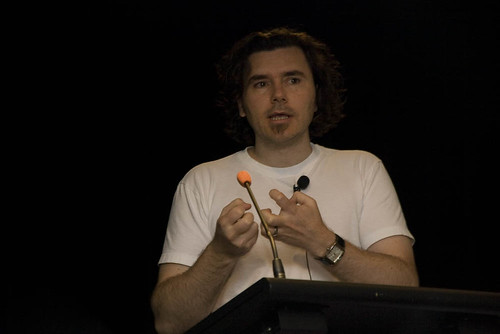Building up the conceptual complexity for the day, Scott Parson's talk Exploring multidimensional tagging frameworks looked at the problem space that is tagging and the possible extension of tagging frameworks into multiple dimensions to address some of the drawbacks of tags.
Matt Hodgson's (from SMS) talk: Semantic analysis in IA took us through an introduction to the topic of linguistics & semantic analysis and their application to the construction of a taxonomy for a large-scale content project. Included a quick look at Connexor's semantic analysis tool - Machinese - and a look at Axure for prototyping.
After a short break, Donna Maurer spoke about ethics, professionalism and communities of practice in interaction design and information architecture. After some technical hurdles (mics, notes, thoughts) Donna spoke about:
- really caring for our users;
- designing for true inclusivity;
- 'causing no harm';
- making good design decisions;
- respecting other people and their skills;
- our actions influence others' perception of our profession;
- providing value;
After lunch, Gary Bunker and Gabriele Hermansson look at the challenge of conducting user research within virtual communities such as Second Life. Good applications of virtual worlds for user research are tasks like User interviews & workshops, training, whereas usability testing was ruled out early.
Research participants within Second Life were paid in 'Linden dollars' - the virtual world currency - the equivalent of around AUD$50. Issues around respectful behaviour, the peculiarities of virtual worlds (everybody flies!!), differences between online & offline running of the same techniques such as:
* online responses for much more concise and lacked elaboration;
* shorter sentences, more condensed & relevant;
* emotional expression requires 'extra work' on the part of the participant, however offline people tended not to be overly expressive either, although for different (e.g. self-conscious);
* less group interactions; more individual comments than offline environments
* less interaction between participants since latency between comments & response, and requires extra effort.
Some good insights here from Gary and Gabrielle.
[At this point I snuck off to watch the MotoGP round 15 telecast from Motegi in Japan...so I missed James & James present their talks, but I heard they were good.]
An open session followed, and then the conference ended on a fairly bouyant note about the local IA/UxD scene. I'll be back next year :)




